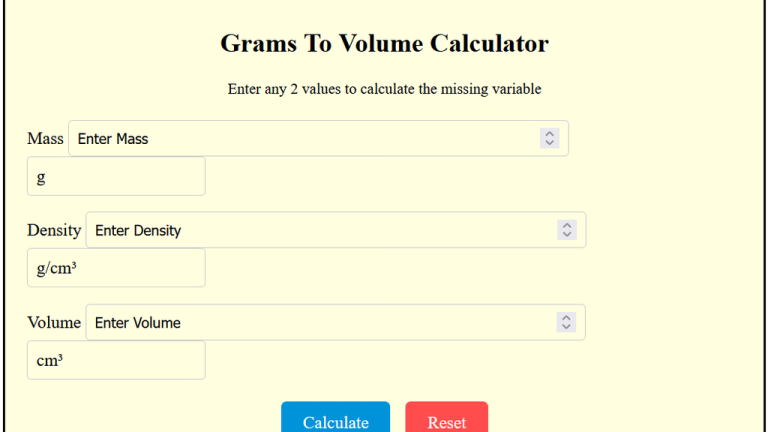Congestion Index Calculator
To calculate the Congestion Index (CI), divide the traffic volume by the capacity and multiply by 100. This formula helps determine how congested a road or system is based on its current load and maximum capacity.
To calculate the Congestion Index (CI), divide the traffic volume by the capacity and multiply by 100. This formula helps determine how congested a road or system is based on its current load and maximum capacity.
The Congestion Index Calculator is an invaluable tool for measuring traffic congestion in various systems, including roadways, ports, and even air traffic. By comparing the current traffic volume to the system’s capacity, it provides an understanding of how efficiently a transportation system is operating.
A high congestion index indicates that a road or transportation network is nearing or exceeding its capacity, which can lead to delays, bottlenecks, and higher costs.
| Variable | Description |
|---|---|
| Congestion Index (%) | |
| Traffic Volume (vehicles, flights, etc.) | |
| System Capacity (maximum vehicles, flights, etc.) |
Example 1:
If the traffic volume on a road is 800 vehicles and the road’s capacity is 1000 vehicles, calculate the congestion index.
| Step | Calculation |
|---|---|
| 1. | |
| 2. | |
| 3. | |
Answer: 80%
Example 2:
For a port with a traffic volume of 500 ships and a capacity of 700 ships, calculate the congestion index.
| Step | Calculation |
|---|---|
| 1. | |
| 2. | |
| 3. |
Answer: 71.4%
The Congestion Index Calculator is a vitally important tool that is used to calculate and assess the level of traffic congestion in a specific area, such as on roads or in ports. Importantly, it facilitates in calculating the traffic load and determining how much congestion is affecting traffic flow.
The congestion index is often based on traffic density, speed reductions, and the volume of vehicles or cargo. This tool is valuable for urban planners, transport engineers, and port authorities, helping them analyze how congestion impacts transportation systems.
For example, in cities, the traffic congestion index provides insights into how efficiently vehicles are moving through an area. A higher index means there’s more congestion, which can lead to delays and economic costs. In aviation, traffic load calculations help determine airspace or runway congestion, affecting flight schedules and airport efficiency.
Overall, the Congestion Index Calculator can also be used in shipping to analyze port congestion, helping to improve logistics and reduce waiting times for vessels.
Without mincing matters, the Congestion Index Calculator offers a practical way to measure traffic flow and congestion levels in various sectors. It helps improve transportation efficiency by providing crucial data for decision-making.

To convert grams to volume, divide the mass (grams) by the density of the substance (grams per unit volume). The Grams To Volume Calculator is an essential accessory for converting mass into volume effortlessly. This tool is principally useful in cooking, chemistry, and industrial applications where precise measurements are critical. It simplifies the process of…

To calculate the adjusted viewing time based on playback speed, divide the original duration by the speed multiplier. This gives you the new time required to watch a video or listen to audio content at a faster rate. The Playback Speed Calculator is majorly used for estimating the time saved by watching or listening to…

To determine the bonus percentage, divide the bonus amount by the annual salary and multiply by 100. The Bonus Percentage Calculator enables the employees and employers to calculate the percentage of a bonus relative to an annual salary. This calculator is highly useful for understanding bonus allocations, determining additional earnings, and setting performance-based rewards. By…

To calculate the Daily Light Integral (DLI), multiply the photosynthetic photon flux density (PPFD) by the light duration (LFD) in hours, then multiply by a conversion factor (3600/1,000,000). The DLI (Daily Light Integral) Calculator is a valuable tool for determining the amount of photosynthetically active radiation (PAR) plants receive in a day. DLI is crucial…

Simply input WBC and lymphocyte percentage, for quick and accurate results. The Absolute Lymphocyte Count (ALC) Calculator helps calculate the total number of lymphocytes in your blood, providing important information about immune function. By inputting your WBC count and lymphocyte percentage, you can quickly determine your ALC. This tool is useful for diagnosing infections, immune…
To calculate playback duration at 1.5x speed, divide the original video or audio duration by 1.5. The 1.5 X Speed Calculator is a convenient tool for determining how long it takes to watch or listen to content at 1.5x speed. Whether you’re catching up on lectures, podcasts, audiobooks, or videos, this calculator simplifies the process…